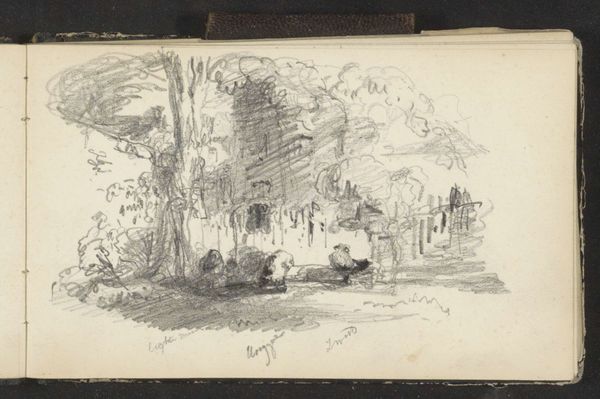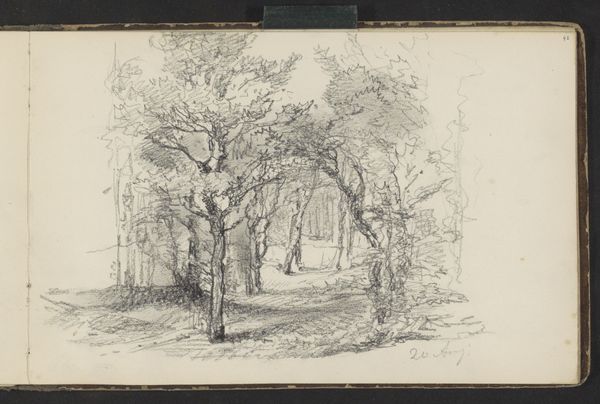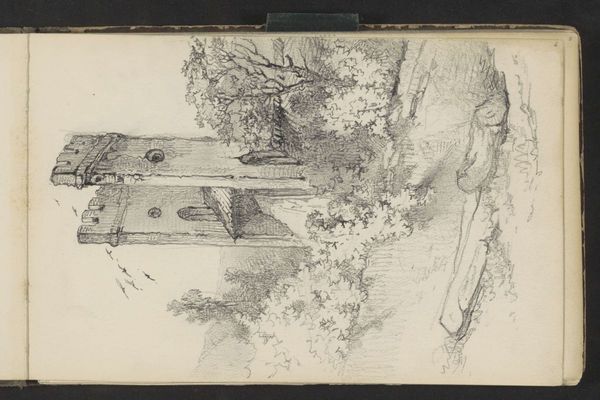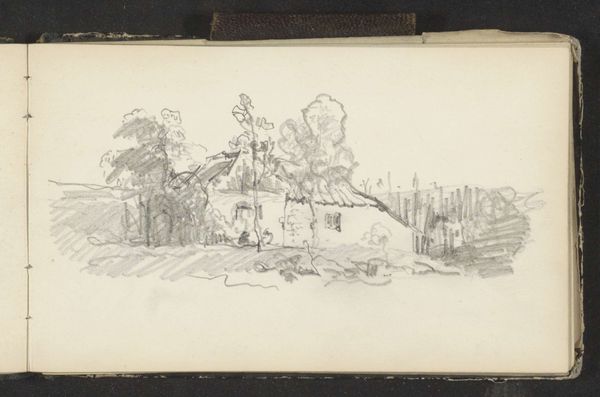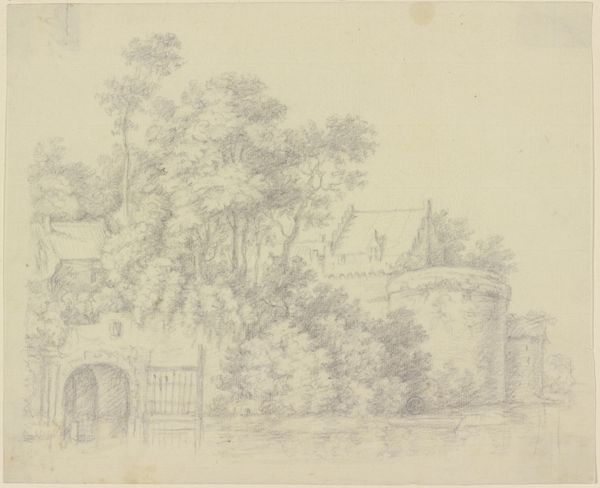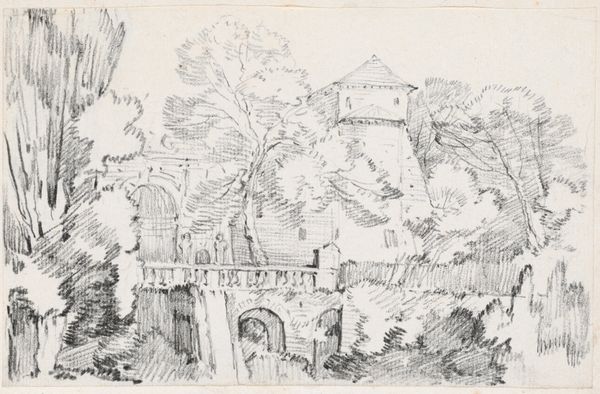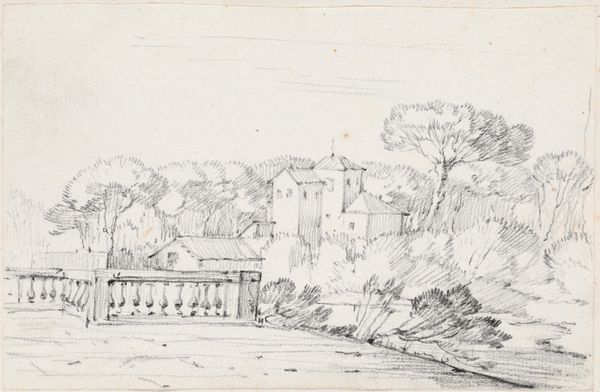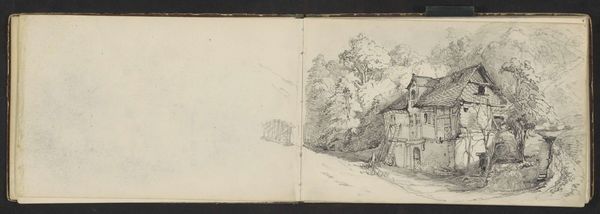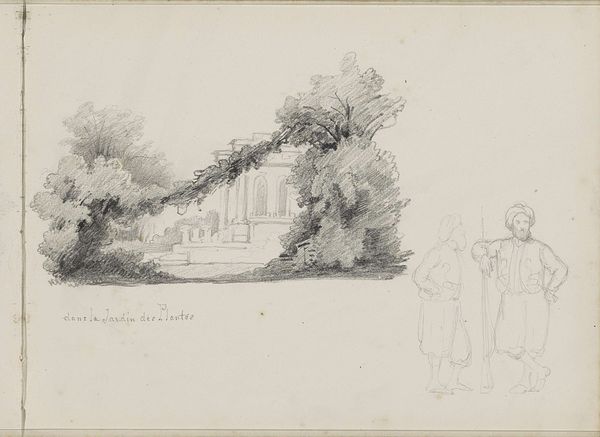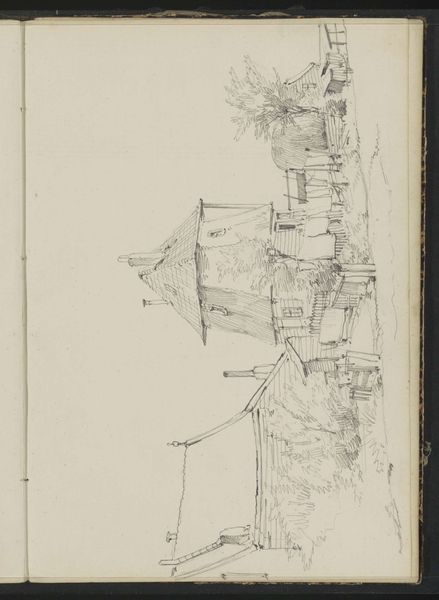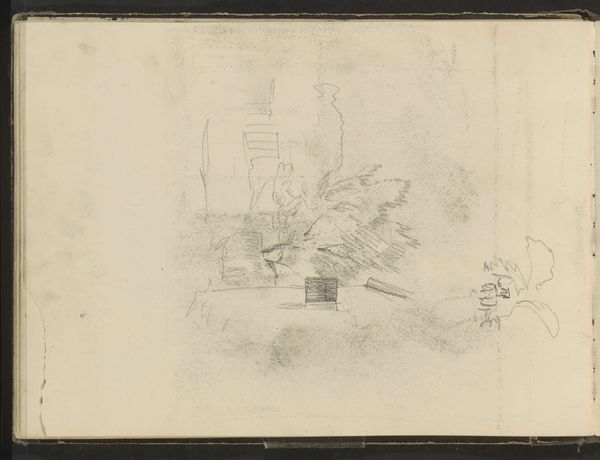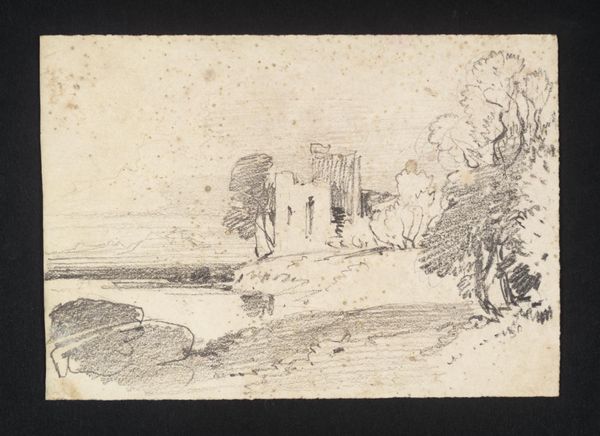
drawing, paper, pencil
#
drawing
#
impressionism
#
sketch book
#
landscape
#
paper
#
pencil
#
realism
Copyright: Rijks Museum: Open Domain
Editor: Here we have Maria Vos's pencil and paper drawing, "Brug bij Kasteel Duivenvoorde," from around 1875-1876. It's a delicate rendering of a bridge, almost like a quick sketch. I’m curious about what you see in terms of how the materials and setting inform its meaning? Curator: From a materialist perspective, I’m interested in how the accessibility of pencil and paper influences the artist’s process. This isn't a grand oil painting; it's a readily available medium, suggesting a more intimate or immediate engagement with the subject. Consider, too, the social context: who had access to these materials, and for what purposes? Editor: So, you're thinking about how the portability and cost of the medium shapes what and how Vos is capturing her environment? Curator: Precisely. Think about the labour involved. The repetitive, almost meditative act of applying pencil to paper, creating tone and texture. The lines aren’t just depicting the scene; they are *doing* something. It's about how this kind of making offered women artists accessible routes of engaging and documenting the spaces around them at a time when larger canvases may have been considered inappropriate to, or out of reach for women's creative means. Do you see how the use of light influences the material aspect here? Editor: Yes, the way the light catches the bridge is interesting. The sharp contrast and quick lines show an exploration. Considering her circumstances, her style emerges in how she makes the bridge material in a real sense of how it stands, the way one looks at this kind of architecture when just taking a break. Curator: And that "break," that act of observing and sketching, also becomes a kind of labour. Reflecting on these quiet depictions offers us an occasion for analyzing access to resources and lived experience from marginalized perspectives. Editor: That’s a different way of looking at art than I am used to, which takes a more structural point of view. I will consider material qualities as forms of production. Curator: Absolutely, this framework can reshape how you experience art. There’s much to uncover when you think through material and the means of artistic production.
Comments
No comments
Be the first to comment and join the conversation on the ultimate creative platform.
